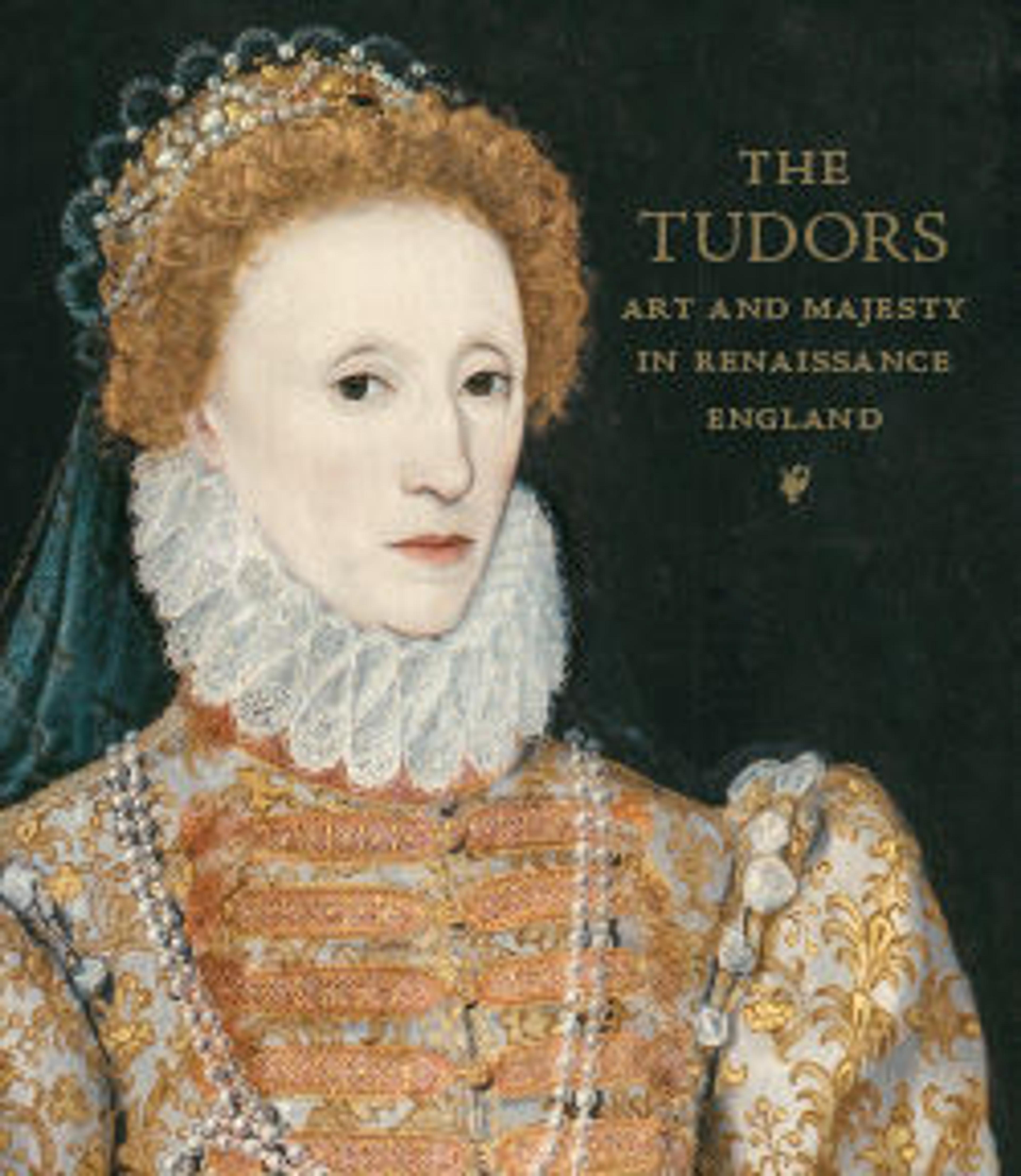English
Armor Garniture of George Clifford (1558–1605),
Third Earl of Cumberland
George Clifford (1558–1605) was appointed Queen’s Champion in 1590 and was made a Knight of the Garter two years later. A favorite of Queen Elizabeth I (reigned 1558–1603), he chose for the decoration of this armor the Tudor rose, the French fleur-de-lis (then part of the English arms), and the cipher of Elizabeth, two E’s back to back.
The Cumberland armor is part of a garniture for field and tournament use. It was made in the royal workshops at Greenwich under the direction of the master armorer Jacob Halder (documented in England 1558–1608). The complete garniture is illustrated in the Jacobe Album, a late sixteenth-century manuscript of pen-and-wash drawings that records the decorated armors produced in the Greenwich workshops. The surviving pieces are the man’s armor and several exchange or reinforcing elements––a grandguard (defense for the lower face and upper left torso), passguard (defense for the left elbow), and four vamplates (hand defenses affixed to the lance) for the tilt; a close helmet with detachable visor reinforce for the tournament fought on foot––and horse armor, consisting of a shaffron (head defense) and saddle plates.
The Cumberland armor is the best preserved armor garniture from the royal workshops at Greenwich. It represents a technical and decorative high point of the Greenwich school.
The Cumberland armor is part of a garniture for field and tournament use. It was made in the royal workshops at Greenwich under the direction of the master armorer Jacob Halder (documented in England 1558–1608). The complete garniture is illustrated in the Jacobe Album, a late sixteenth-century manuscript of pen-and-wash drawings that records the decorated armors produced in the Greenwich workshops. The surviving pieces are the man’s armor and several exchange or reinforcing elements––a grandguard (defense for the lower face and upper left torso), passguard (defense for the left elbow), and four vamplates (hand defenses affixed to the lance) for the tilt; a close helmet with detachable visor reinforce for the tournament fought on foot––and horse armor, consisting of a shaffron (head defense) and saddle plates.
The Cumberland armor is the best preserved armor garniture from the royal workshops at Greenwich. It represents a technical and decorative high point of the Greenwich school.
Artwork Details
- Title:Armor Garniture of George Clifford (1558–1605), Third Earl of Cumberland
- Armorer:Made under the direction of Jacob Halder (British, master armorer at the royal workshops at Greenwich, documented in England 1558–1608)
- Date:1586
- Geography:Greenwich
- Culture:British, Greenwich
- Medium:Steel, gold, leather, textile
- Dimensions:H. 69 1/2 in. (176.5 cm); Wt. 60 lb. (27.2 kg)
- Classification:Armor for Man
- Credit Line:Munsey Fund, 1932
- Object Number:32.130.6a–y
- Curatorial Department: Arms and Armor
More Artwork
Research Resources
The Met provides unparalleled resources for research and welcomes an international community of students and scholars. The Met's Open Access API is where creators and researchers can connect to the The Met collection. Open Access data and public domain images are available for unrestricted commercial and noncommercial use without permission or fee.
To request images under copyright and other restrictions, please use this Image Request form.
Feedback
We continue to research and examine historical and cultural context for objects in The Met collection. If you have comments or questions about this object record, please contact us using the form below. The Museum looks forward to receiving your comments.
